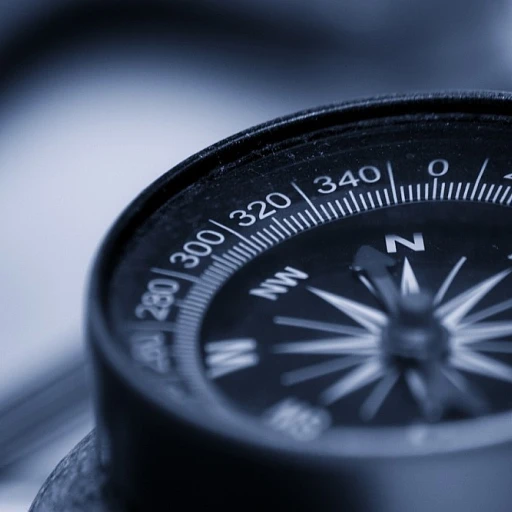
Understanding the skills gap and its impact on your career
The reality of skills gaps in today’s workforce
Skills gaps are a common challenge in many industries, especially in sectors like manufacturing, maintenance, and management. When the skills required for a job or process outpace the abilities of the current workforce, it can lead to inefficiencies, equipment failure, and even safety risks. For small businesses and large organizations alike, this gap can impact maintenance reliability, scheduling, and overall operations.
Why bridging the gap matters for your career
Understanding your own skills gap is the first step toward professional growth. In maintenance management, for example, lacking up-to-date knowledge in planning scheduling or reliability centered maintenance can limit your ability to contribute to data driven decisions or improve performance indicators. The same applies to roles in service, environmental health, or operations, where evolving job requirements demand ongoing workforce development.
- Maintenance planning: Without the right skills, job plans may not address corrective action or optimize resources, leading to increased downtime.
- Scheduling maintenance: Gaps in scheduling knowledge can result in poor allocation of time and resources, affecting the amount time equipment is available for production.
- Management maintenance: Effective management relies on understanding the planning process and using tools like CMMS (computerized maintenance management systems) to track jobs and agreements.
How skills gaps affect business and personal success
For businesses, unaddressed skills gaps can reduce reliability, increase costs, and lower service quality. For individuals, these gaps may limit job opportunities or advancement. Addressing them through a structured job plan is essential for both personal and organizational success. If you’re interested in how educational programs are tackling these challenges, check out this insightful look at business analysis education and its role in workforce development.
As you move forward, assessing your current skills and identifying specific gaps will help you create a targeted plan for improvement. This process is vital for anyone aiming to stay competitive and reliable in today’s fast-changing job market.
Assessing your current skills and identifying gaps
Evaluating Your Current Capabilities
Before you can bridge your skills gap, it’s essential to take a close look at your current abilities. This process is more than just listing your strengths and weaknesses. It’s about understanding how your skills align with the demands of your job, industry, and the evolving landscape of maintenance management, manufacturing, and operations.
Key Steps in Identifying Gaps
- Review job requirements: Compare your existing skills with those needed for your current or desired role. Pay attention to technical skills like maintenance planning, scheduling, and reliability centered maintenance, as well as soft skills such as management and workforce development.
- Analyze performance indicators: Use data driven insights from your workplace, such as equipment reliability, service delivery, or environmental health metrics, to identify areas where you may fall short.
- Consult job plans and maintenance records: Examine past job plans, maintenance management reports, and corrective action logs. These documents can reveal recurring issues, failures, or gaps in your planning process and scheduling maintenance.
- Seek feedback: Ask for input from supervisors or colleagues involved in management maintenance or planning scheduling. Their perspective can highlight skills you may overlook.
Tools and Resources for Assessment
Many organizations use Computerized Maintenance Management Systems (CMMS) to track job performance, scheduling, and resource allocation. Reviewing CMMS data can help you spot trends in equipment failure, amount time spent on jobs, and the effectiveness of your maintenance reliability strategies. For small business owners, simple spreadsheets or job planning templates can also be effective for tracking skills and job performance.
Understanding the complexity of job taxonomy is also crucial in this step. For a deeper dive into how job classifications and skill requirements are structured, check out this resource on job taxonomy.
Why This Matters
By thoroughly assessing your current skills and identifying gaps, you lay the foundation for a targeted job plan. This approach ensures that your efforts in maintenance planning, scheduling, and professional development are focused on the areas that will have the greatest impact on your career and your organization’s reliability and performance.
Setting realistic goals for your job plan
Defining Clear, Measurable Objectives
When building a job plan to bridge your skills gap, it’s essential to set realistic and measurable goals. This step transforms your assessment into actionable targets, making the planning process more effective for both maintenance management and workforce development. Start by identifying which skills are most critical for your job or industry. For example, in manufacturing or maintenance planning, you might focus on reliability centered maintenance, data driven decision making, or scheduling maintenance tasks. Consider the performance indicators that matter most in your field, such as equipment uptime, environmental health compliance, or service delivery standards.- Break down your goals into smaller, achievable steps. For instance, if your aim is to improve maintenance reliability, set a target to complete a certified training in reliability centered maintenance within a set amount of time.
- Align your objectives with your current job requirements and future career ambitions. If you’re in management maintenance, you might prioritize learning advanced planning scheduling techniques or mastering a new CMMS (computerized maintenance management system).
- For small business owners, focus on developing a jobs plan that enhances both operations and resource allocation, ensuring corrective action is taken when failures occur.
Making Your Goals SMART
A proven approach is to use the SMART framework: Specific, Measurable, Achievable, Relevant, and Time-based. This ensures your job planning is grounded in reality and tailored to your unique situation. For example, rather than aiming to "improve maintenance skills," a SMART goal would be: "Complete an online course in maintenance planning and implement a new scheduling process within three months."Balancing Ambition and Practicality
It’s tempting to set ambitious targets, but overreaching can lead to frustration. Consider the resources available, such as time, budget, and access to training. If you’re managing a team, involve them in the planning process to ensure buy-in and realistic expectations. For professionals in service or operations, setting incremental goals—like reducing equipment failure rates by 10% over six months—can help maintain motivation and demonstrate progress.Documenting and Reviewing Your Plan
Write down your goals and the steps needed to achieve them. This jobs plan becomes your roadmap, guiding your actions and making it easier to track progress. Regularly review and update your plan as you gain new skills or as job market demands shift. For more insights on crafting compelling, goal-oriented plans, you can check out this guide on setting effective professional objectives. By setting realistic, data driven goals and integrating them into your job plan, you create a strong foundation for bridging your skills gap—whether you’re in maintenance, management, manufacturing, or any other field.Choosing the right learning methods and resources
Choosing Learning Methods That Fit Your Job Plan
Once you have set clear goals for your job plan, the next step is to select learning methods and resources that align with your needs. The right approach depends on your current skills, the requirements of your job, and the specific gaps you want to bridge. In fields like maintenance, manufacturing, and management, practical experience is just as important as theoretical knowledge.
- On-the-job training: Many professionals in maintenance management and manufacturing benefit from hands-on learning. Participating in real maintenance planning or scheduling maintenance tasks helps you understand equipment, reliability centered maintenance, and the planning process.
- Online courses and certifications: Platforms offering courses in maintenance reliability, job planning, and workforce development can be valuable. Look for programs that are data driven and focus on performance indicators, corrective action, and environmental health.
- Workshops and seminars: These are ideal for small business owners or those involved in management maintenance. Workshops often cover topics like job plans, planning scheduling, and reliability centered approaches, providing practical insights and networking opportunities.
- Mentorship and peer learning: Learning from experienced professionals in your field can accelerate your understanding of maintenance management, scheduling, and the use of CMMS (computerized maintenance management systems).
- Self-study and reading: Industry publications, technical manuals, and case studies can deepen your knowledge about job planning, maintenance reliability, and the planning process.
Matching Resources to Your Schedule and Goals
Time management is crucial when choosing learning resources. Consider the amount of time you can realistically dedicate to upskilling. For example, if your job involves frequent service calls or equipment maintenance, microlearning modules or short video tutorials may fit better into your schedule than lengthy courses.
For those in operations or management, integrating learning into your daily workflow—such as reviewing job plans or analyzing performance indicators—can make the process more efficient. Using CMMS or other digital tools can also help track your progress and ensure your learning is aligned with your job plan.
Evaluating Quality and Relevance
Not all learning resources are created equal. Prioritize those that are recognized in your industry and offer up-to-date content. For maintenance planning and reliability centered maintenance, look for resources that use real data and case studies from actual operations. This ensures your learning is practical and directly applicable to your job.
Finally, remember that the best learning methods are those that support your long-term career goals and adapt as the job market evolves. Whether you are in a small business, manufacturing, or maintenance management, choosing the right resources is key to closing your skills gap and improving job performance.
Tracking your progress and staying motivated
Building Consistency with Data-Driven Tracking
Once you have a job plan in place, tracking your progress is essential for bridging your skills gap. Consistent monitoring helps you understand if your maintenance management and workforce development efforts are delivering results. Use performance indicators and data-driven methods to measure improvements in your job planning process. For example, if you are in manufacturing or maintenance reliability, tracking scheduling maintenance and equipment performance can highlight areas where corrective action is needed.
Staying Motivated Throughout the Planning Process
Maintaining motivation over time can be challenging, especially as the amount of time and resources required for upskilling can fluctuate. Here are some practical ways to stay engaged:
- Set short-term milestones: Break your job plan into smaller, achievable goals. Celebrate each success to maintain momentum.
- Use management maintenance tools: Leverage CMMS (Computerized Maintenance Management Systems) or other scheduling tools to visualize your progress and keep your planning scheduling on track.
- Seek feedback: Regularly review your performance with supervisors or mentors. Their insights can help you refine your maintenance planning and job plans.
- Connect with peers: Join professional groups or small business networks focused on maintenance reliability or workforce development. Sharing experiences can boost motivation and provide new perspectives.
Adapting to Challenges and Maintaining Reliability
Unexpected challenges, such as equipment failure or changes in operations, can disrupt your job planning. A flexible approach is key. If your original plan is not yielding the expected results, use data from your performance indicators to adjust your strategy. This could mean shifting resources, updating your scheduling maintenance routines, or exploring new learning resources. Reliability centered maintenance and environmental health considerations should also be integrated into your ongoing planning process to ensure long-term success.
Remember, bridging the skills gap is not a one-time event but a continuous process. By tracking your progress, staying motivated, and adapting your job plan as needed, you can build a more resilient and skilled professional profile.
Adapting your job plan as the job market evolves
Staying Agile in a Changing Job Landscape
The job market is always evolving, especially in fields like maintenance, manufacturing, and operations. What worked in your job plan last year might not be enough today. New technologies, updated regulations, and shifting business priorities can all impact the skills you need. That’s why it’s essential to keep your job plan flexible and data driven.- Monitor industry trends: Regularly review news, professional forums, and performance indicators relevant to maintenance management, scheduling, and workforce development. This helps you spot emerging skills and changes in reliability centered maintenance or environmental health requirements.
- Update your plan based on feedback: Use data from your maintenance management systems (like CMMS) and job performance reviews to identify areas where corrective action is needed. If you notice recurring equipment failure or gaps in service delivery, adjust your learning goals and resources accordingly.
- Reassess your resources: As your responsibilities shift, the amount of time and resources you can dedicate to learning may change. Small business professionals, for example, might need to balance job planning with other management tasks. Make sure your plan remains realistic and achievable.
- Incorporate new learning methods: The planning process should include ongoing evaluation of training options. Online courses, workshops, and on-the-job training can all play a role in maintenance reliability and job planning scheduling. Choose methods that fit your current needs and job environment.












